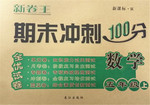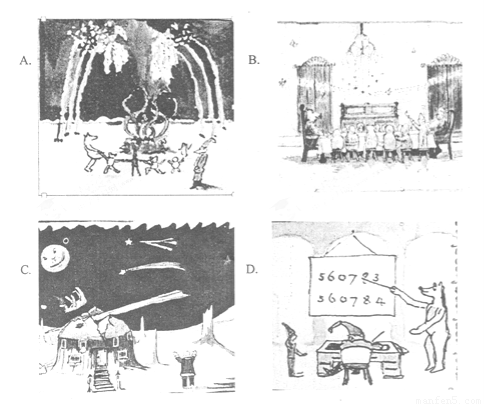题目内容
His rich knowledge of computer _____ him a job in a big IT company.
- A.won
- B.took
- C.cost
- D.give
win sb. sth.使某人赢得了某事。

 新卷王期末冲刺100分系列答案
新卷王期末冲刺100分系列答案 全能闯关100分系列答案
全能闯关100分系列答案Over the past few months, PSY’s funny video for “Gangnam Style” has become a YouTube sensation, resulting in over 112,000,000 views since July 15. It’s also been Tweeted more than 780,000 times and received over 260, 000 likes on Facebook, reports Mashable.com.
With the rapper(说唱歌手) making an appearance at Thursday’s MTV Video Music Awards, here’s what you need to know about the break-out artist.
His real name is Park Jae-Sang. The 35-year-old Korean pop rapper is known for his comedic music videos and performances. The video for “Gangnam Style” is no exception. When his first album PSY—From the Psycho World! was released in 2001, he was nicknamed “PSY” because of his unusual dress, special lyrics(歌词) and funny dance movies.
Gangnam is a wealthy neighborhood in Seoul(首尔). Gangnam may only be 15 square miles, but the district in Seoul, South Korea, is home to the headquarters of some of the country’s most influential companies, including Samsung, Hyundai and LG. The region also makes up 7% of South Korea’s GDP. 41% of students at Seoul University, a very famous college, come from Gangnam. The lyrics of PSY’s song describe the personality of a girl and a guy.
He studied in the U.S. Born in South Korea on December 31, 1977, PSY attended Banpo Elementary School, Banpo Middle School and Eva High Sch ool. But when it came time to achieve a college degree, the rapper attended both Boston University and Berklee College of Music in the U.S.
“Gangnam Style” is giving K-pop international fame. “Gangnam Style” is currently No.1 on the iTunes music video chart. The video has surpassed Taylor Swift’s “We Are Never Ever Getting Back Together”; Justin Bieber’s “As Long As You Love Me”; and Katy Perry’s “Wide Awake”. This is the first time a Korean artist has ranked this high on iTunes.
【小题1】What is the first paragraph mainly about?
| A.The success of “Gangnam Style”. |
| B.The origin of “Gangnam Style”. |
| C.The result of the Music Award. |
| D.The childhood of PSY. |
| A.is already in his forties now |
| B.made his first album in 2003 |
| C.danced only in his “Gangnam Style” |
| D.has developed his special comedic style |
| A.It is the capital of South Korea. |
| B.It is rich and better developed. |
| C.Seoul University lies in it. |
| D.It covers about 90 square miles. |
| A.“Gangnarn Style” isn’t popular in English-speaking countries. |
| B.PSY will be given another big prize for music in the future. |
| C.iTunes is the No.1 music company on the internet. |
| D.“Gangnam Style” has won the most worldwide popularity. |
Why does most of the world travel on the right side today? Theories differ, but there’s no doubt that Napoleon was a major influence. The French had used the right since at least the late 18th century. Some say that before the French Revolution, noblemen drove their carriages on the left, forcing the peasants to the right. Regardless of the origin, Napoleon brought right-hand traffic to the nations he conquered, including Russia, Switzerland and Germany. Hitler, in turn, ordered right-hand traffic in Czechoslovakia and Austria in the 1930s. Nations that escaped right-hand control, like Great Britain, followed their left-hand tradition.
The U.S. has not always been a nation of right-hand rivers; earlier in its history, carriage and horse traffic traveled on the left, as it did in England. But by the late 1700s, people driving large wagons pulled by several pairs of horses began promoting a shift to the right. A driver would sit on the rear (后面的) left horse in order to wave his whip with his right hand; to see opposite traffic clearly, they traveled on the right.
One of the final moves to firmly standardize traffic directions in the U.S. occurred in the 20th century, when Henry Ford decided to mass-produce his cars with controls on the left (one reason, stated in 1908; the convenience for passengers exiting directly onto the edge, especially… if there is a lady to be considered). Once these rules were set, many countries eventually adjusted to the right-hand standard, including Canada in the 1920s, Sweden in 1967 and Burma in 1970. The U.K. and former colonies such as Australia and India are among the western world’s few remaining holdouts. Several Asian countries, including Japan, use the left as well — thought many places use both right-hand-drive and left-hand-drive cars.
【小题1】Why did people in Switzerland travel on the right?
| A.They had used the right-hand since the 18th century. |
| B.Rich people enjoyed driving their carriages on the right. |
| C.Napoleon introduced the right-hand traffic to this country. |
| D.Hitler ordered them to go to against their left-hand tradition. |
| A.Austria | B.England | C.Japan | D.Australia |
| A.in order to change traffic directions in the U.S. |
| B.so that passengers could get off conveniently |
| C.because rules at that time weren’t perfect |
| D.though many countries were strongly against that |
| A.Before the French Revolution, all the French people used the right. |
| B.People in Britain and the U.S. travel on the same side nowadays. |
| C.The Burmese began to travel on the right in 1970. |
| D.All the Asian nations use the left at present. |
| A.Who made the great contributions to the shift of traffic directions? |
| B.How cars have become a popular means of transportation? |
| C.How Henry Ford produced his cars with controls on the left? |
| D.Why don’t people all drive on the same side of the road? |
